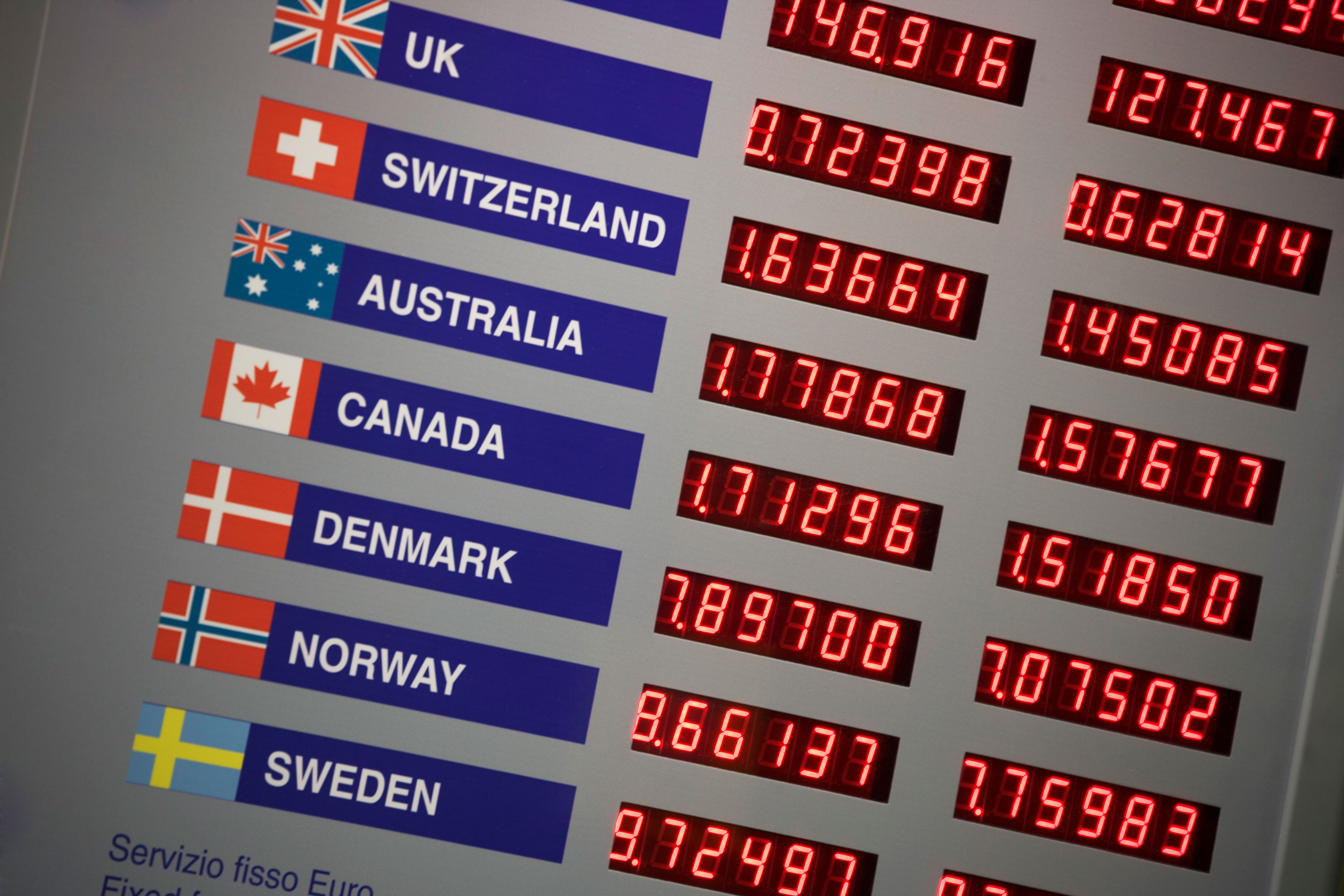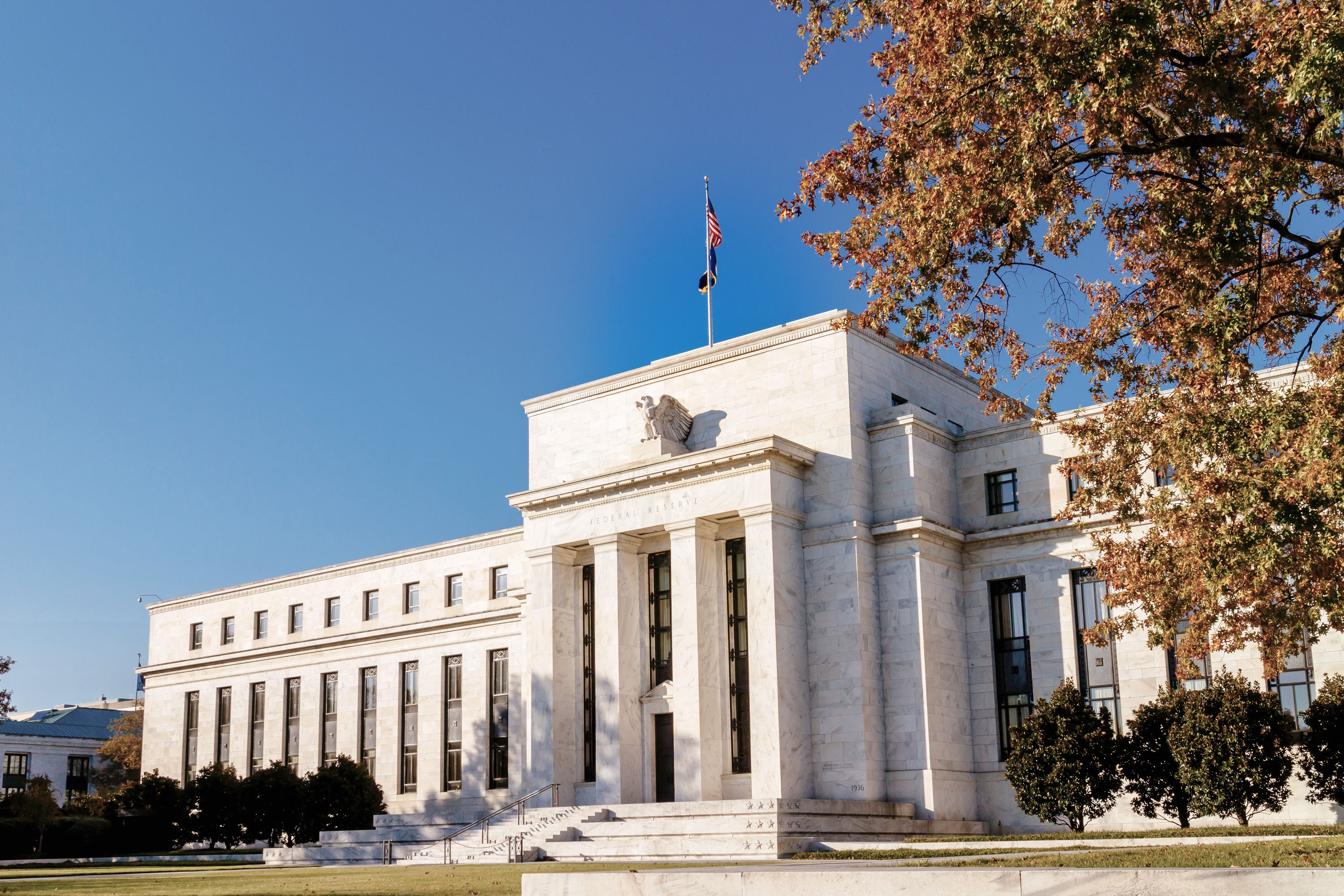Research Brief Selected research results

Since the financial crisis, financial cycles – medium to longer-term co-movements between credit aggregates and asset prices – have increasingly been the subject of both research and economic policy debate. Monetary policy plays a key role in this context, as it can help stabilise financial cycles within the scope of its primary objective, for example by taking account of developments in the housing market when setting interest rates. Looking back, such a monetary policy in the United States would have been able to significantly suppress the boom and subsequent bust in the US housing market in the 2000s – and thus also the far-reaching implications for its real economy.

If a broader range of collateral is permitted for funding via central bank lending, this gives banks an incentive to choose previously ineligible, lower-rated assets as collateral instead of government bonds. Banks could then more easily use government bonds as collateral in the private sector repo market and thus help to alleviate asset scarcity there. This hypothesis is investigated in a new study (Greppmair, Paludkiewicz, Steffen, 2024).

How does monetary policy affect the exchange rate? This question is important to central banks because the exchange rate has an indirect impact on inflation. It has therefore been looked at extensively in the economic literature. Even so, there is no consensus on how monetary policy impulses take effect over time and on their overall importance for exchange rate developments. A recent study delivers new insights: monetary policy impulses take full effect with no time lag and could play a greater role for exchange rate developments than previously thought.

The outcome of the Brexit referendum in June 2016 brought about an abrupt increase in political and economic uncertainty. In a new study, we show that German banks reduced lending to firms in the United Kingdom (UK) following the referendum. These firms reduced employment and investment as a result of the credit supply shock. Multinational corporations in the UK were able to mitigate this decline in external financing by making greater use of internal capital markets operated within their international corporate structures. Our study shows that the outcome of the Brexit referendum put pressure on the UK economy via indirect channels as well. Moreover, it highlights the role of multinational corporations, which were better able to mitigate the impact.

Central banks have used communication about the inflation outlook as an additional policy tool in response to the post-pandemic inflation surge. We present novel survey evidence that the ECB’s guidance about its projected inflation path can substantially lower households’ inflation expectations when kept in a sophisticatedly simple (KISS) way.

In recent years, geopolitical risks have risen in many places. This not only has a direct impact on the countries affected, but also on international trade. In a new study, we show that rising geopolitical risks in trade partner countries dampen imports of goods, make them more expensive and impair supply chains. In addition, they are likely to be conducive to a fragmentation of global trade. Risks associated with China are particularly significant in this context.

The advantages or disadvantages firms experience as a result of their size, referred to in the economic literature as returns to scale, are of central importance in many economic models. Increasing returns to scale, whereby unit costs decrease as output volume increases, could explain productivity differences between Europe and the United States. We present fresh evidence on the returns to scale of European firms: most exhibit constant returns to scale, but a non-trivial share also show increasing returns to scale.

A substantial share of bank loans of euro area banks is secured with real estate. In a new study, we examine whether, in the low interest rate environment, banks invested more in foreign real estate-backed lending. Our results suggest that regulatory differences between the bank’s home country and possible destination countries matter for banks’ search for yield.

Russia’s invasion of Ukraine triggered an energy crisis in 2022 that posed major challenges to the German economy and sparked broad debate on the economic ramifications of the marked rise in natural gas prices. In a new study, we examine the causes and consequences of this crisis and show how supply shocks and a surge in demand for natural gas storage impacted on natural gas prices and industrial production in Germany.

Financial repression is intended to help the government deleverage over time, for example following crises, by artificially lowering the yield on government bonds. However, its impact on the deb-to-GDP ratio also depends on how it affects the economy as a whole, as financial repression also influences private investment and saving decisions. In view of these macroeconomic interrelationships, financial repression can lead to a net rise in the government debt-to-GDP ratio. A new study suggests that this is what happened in the United States following the Second World War.

Global systemically important banks (G-SIBs) have to comply with additional buffer requirements owing to their size and interconnectedness within the banking sector. The buffer level banks are expected to meet depends on their exposures at a certain point in time. A new study shows that G-SIBs reduce their exposures more strongly – twice as strongly, in fact – than other banks at period-end reporting dates. As a result, the buffer level may be too low to cover the additional risk associated with G-SIBs.

Transition risk is the risk arising from the economy’s shift towards net-zero carbon emissions. Applying a novel methodology, we find that large unanticipated increases to transition risk are predominantly related to political events and can have notable macroeconomic consequences. Interestingly, in the short run these shocks do not uniformly generate inflationary pressure, challenging the prevalent notion of “greenflation.” Finally, our results highlight an important role for country-specificities, suggesting, for instance, that there may also be economic benefits attached to the transition. Overall, while international policy coordination is essential, these findings underscore the importance of tailoring policy interventions to each nation's unique economic context.

Energy prices skyrocketed as a result of the Russian war of aggression. Government stabilization measures such as the gas price brake were intended to support overall economic development. Our study compares the effects of two fiscal stabilization measures for companies: subsidies in the form of quantity-limited price guarantees and production-independent direct transfers. It turns out that the effectiveness of the measures depends on the availability of the good.

This article studies the impact of a digital euro on financial stability. Our survey findings indicate that German households are open to the digital euro – suggesting they perceive that there are benefits to accessing a central bank digital currency. However, demand for the digital euro raises concerns about strong outflows of deposits from the banking sector, with potential implications for financial stability. We study this issue in a new macroeconomic model and conclude that the digital euro – if complemented with an appropriate holding limit, i.e. the maximum digital euro amount that an individual is permitted to hold – can actually strengthen financial stability and improve welfare.

The digital transformation creates scope to make workflows and production processes more efficient. To quantify the impact of digital transformation on labour productivity, research often focuses on investments in digital technologies. This perspective neglects the fact that digital intermediate inputs, such as microchips or integrated software, also represent an important transmission channel for the efficiency gains from digitalisation. In a new study, Bundesbank researchers have examined how efficiency gains in the digital sectors have affected labour productivity in Germany, France and the United States.

Flexible working time arrangements can help parents reconcile family and work commitments. In this context, a new study examines the impact of the statutory right to work part-time on the labour supply and labour income of eligible mothers.

Forecasting current month inflation (“nowcasting”) is a highly important exercise for central banks and market participants, especially in turbulent times. In a new study, researchers investigate how millions of granular weekly scanner data from households combined with machine learning (ML) techniques can improve the nowcast of monthly German inflation.

A new research paper shows that German households increase their inflation expectations following increases in their energy prices. This effect is, however, absent for high-income and well-informed households as well as for firms. Higher inflation expectations can influence saving and consumption decisions and thus aggregate demand.

Banks with substantial central bank reserves are earning income from their reserve holdings in the European Central Bank’s (ECB) recent rate hiking cycle. This could make their credit supply less sensitive to the monetary policy tightening compared to other banks. This hypothesis is examined in a new study (Fricke, Greppmair, Paludkiewicz, 2023) using the new AnaCredit dataset – a credit register harmonised across the euro area.

Some households contribute only a small amount of equity when buying property financed by a loan. If they then default on the loan, lenders may incur losses. Should the problem affect a large number of lenders, this could potentially jeopardise financial stability. Minimum requirements for the own funds households need to provide can limit losses that may arise. However, this would mean that some households can no longer obtain loans in the desired amount. A Bundesbank study shows that a large proportion of the households interested in buying which would be affected by this are then willing to buy a cheaper property or to save more in order to buy at a later date. The impact on homeownership is therefore likely to be smaller in the medium than in the short term.

Internal risk models play an important role in ensuring capital adequacy at banks. Banking supervisors keep a particularly close eye on them, as banks have some degrees of freedom when it comes to model design. A new study examines the incentives for banks to implement internal risk models, analyses their impact on risk management and explains possible consequences of a new regulatory proposal regarding application of such models.

The trade dispute between the United States and China in 2018 and 2019 increased trade policy uncertainty, leading to a marked appreciation of the US dollar (USD). The obvious explanation for this is the special role played by USD investments in the global financial system as a safe haven for investors in times of high uncertainty. The USD appreciation triggered in this way in 2018 and 2019 enabled Chinese exporters to lower their prices in US dollars. As a result, the impact of the additional import tariffs imposed at the time by the United States on Chinese products was significantly reduced.

The debate surrounding climate change mitigation measures has lately also extended to central bank instruments. One of the points under discussion is the preferential treatment of green bonds in central bank monetary policy operations. This would improve the financing conditions of firms with low emissions and thus create an incentive for green investment. Using a novel model, we analyse the climate policy and macroeconomic implications of a green-tilted collateral policy and are able to identify only minor effects on green investment.

The Eurosystem’s negative interest rate policy (NIRP) incentivised banks to also charge their customers negative deposit rates. My analysis shows that German banks did actually charge negative interest rates on corporate deposits at times. However, the banks that did so were primarily those which relied heavily on household deposits as a source of funding. These banks were very reluctant to apply negative interest rates to household deposits as well, and thus probably faced particularly high margin pressure. It was primarily these banks that also charged higher fees in order to ease this pressure.

Record inflation in the euro area has led the ECB Governing Council to start raising its key interest rates. The effects on the domestic economy and spillover effects on foreign countries may primarily depend on whether exchange rates are floating or fixed. A new empirical study shows that, during the time of the Deutschmark, the Bundesbank’s monetary policy was transmitted to a significantly greater degree to neighbouring European countries with fixed exchange rates to the Deutschmark than to those with floating exchange rates to the Deutschmark.

A Bundesbank survey shows that individuals living in Germany suffered different types of financial losses during the pandemic. Primarily individuals with lower incomes reported losses in wages and salaries which persisted much longer than other financial losses, such as falling securities prices. The latter were frequently reported at the start of the pandemic, but were subsequently offset at least partly, according to the respondents. It was mainly the more persistent wage and salary losses that changed households’ consumption and saving decisions. Altered saving and consumption behaviour can, in turn, affect the transmission of monetary policy measures.

In a securitisation, a clearly defined and immutable loan portfolio is removed from a bank’s balance sheet and converted into marketable securities – that is the general understanding of how securitisation works. However, contrary to this view, the composition of securitised loan portfolios may change during the life of the securities. A new study explains why this is the case and examines the impact of replenishment on the quality of securitised portfolios. Originators’ reputation and transparency in the securitisation market are identified as key determinants in the selection of loans used to replenish securitised portfolios.

Are asset prices driven by news or by factors unrelated to economic fundamentals, such as market sentiment? In most asset pricing models news play a dominant role, but most empirical applications find only a low explanatory power of news. A new study examines this problem using an extensive time-stamped event database and finds that about half of all high-frequency market movements can be attributed to news.

Implementing a minimum exchange rate regime by buying foreign currency eases monetary conditions domestically and may thus have a direct impact on the inflation rate. However, such foreign currency purchases involve a risky expansion of the central bank’s balance sheet total. A new model can now predict what expansion of the balance sheet a central bank must expect if it wishes to implement a minimum exchange rate in the foreign exchange market.

Climate change is a global challenge that requires international policy coordination. This conclusion is also borne out in a recent study on the macroeconomics implications of carbon pricing. Several different scenarios are considered – different regions introduce carbon pricing schemes unilaterally or in cooperation, and in the presence or absence of border adjustment schemes.

As a response to the Covid-19 pandemic, parents in Germany received a series of transfer payments from the state in 2020 and 2021. This so-called child bonus (“Kinderbonus”) amounted to a total of €450 per child. A new study finds that the child bonus led to only a slight increase in household spending. Therefore, the child bonus should be seen less as a fiscal stimulus measure and more as an instrument of redistribution from the general population to families.

Are individuals concerned enough about climate change to change their behavior and bear additional costs as a consequence? How can they be motivated to fight climate change? A Bundesbank survey conducted between April 2020 and December 2021 shows that people are more concerned about climate change than about the state of the economy. During most of the ongoing pandemic, only the coronavirus was of a higher concern. While people who rate climate change as a serious issue are also more willing to take on additional costs to help fight climate change, providing information on ways to reduce carbon emissions further increases their willingness to do so.

The rate of inflation has a bearing on the relative price of individual products and therefore on demand for those products. Using new micro price data, we investigate how high the optimal inflation rate must be to prevent relative product demand from being distorted. Contradicting a common claim, we find that the optimal rate is not zero for a large part of the euro area, but is, in fact, clearly in positive territory.

In the mid-2010s, wages in Germany recorded comparatively weak growth while employment was surprisingly strong. A new study examines how immigration in the context of EU free movement of workers, in particular from the “new” Central and Eastern European Member States, contributed to these developments on the German labour market.

In the aftermath of the global financial crisis, a consensus rapidly emerged that systemic risk – a central concept in financial stability – needed to be contained going forward. However, to this day experts cannot agree on how to even measure systemic risk in the first place. In the past few years, researchers have proposed a plethora of indicators, making matters more difficult for policymakers. Our study proposes an analytical approach designed to lend structure to this universe of indicators for measuring systemic risk.

Is there a difference between the inflation expectations of private households in Germany formed under the ECB’s previous target definition of “below, but close to, 2%” and those under the new inflation target of “symmetrically 2%”? New survey results from the Bundesbank Online Panel Households (BOP-HH) show that the new inflation target is associated with moderately higher inflation expectations for the next two to three years. The differences become more accentuated when the respondents are also told that the new monetary policy strategy entails the possibility of inflation exceeding the target.

Banks grant long-term loans funded by short-term customer deposits. This maturity transformation earns banks money because long-term interest rates are generally higher than short-term interest rates. At the same time, this exposes banks to the risk that interest rates will rise, forcing them to pay more for deposits in the short term already, whereas they only receive the higher interest on new loans. In the low interest rate environment which has prevailed over the past few years, the premium on assuming interest rate risk has trended downward. At the same time, banks with poor profitability have stepped up their maturity transformation and thus also this risk. This is potentially a sign of a search for yield.

The outbreak of the COVID-19 pandemic had an unprecedented impact on the global economy, forcing governments to take rapid fiscal action. However, generous government support programmes depend on the government having a good credit rating. How do financial market players take fiscal constraints into account in their investment decisions? A new study looks into this question by analysing developments in short positions in the first few months of the COVID-19 pandemic in Europe.

It is often said that industry in oil-importing countries is especially hard hit when oil prices climb. However, a new study reveals that the manufacturing sector actually often does well during episodes of elevated oil prices. This is because, from a global perspective, that particular sector is a driving force behind oil price movements. The manufacturing sector’s healthy performance thus bolsters the economy of oil-importing countries in times of rising oil prices. Conversely, industry often exerts negative effects when oil prices fall.

The root causes of the Great Depression from 1929 to 1933 have been researched extensively. In this context, economic historians view central bank policy as having played a pivotal role, something which empirical modelling often fails to confirm. A new study likewise examines this influence empirically, but more explicitly takes into account the functioning of the international monetary system at the time – the international gold standard.

Institutional funds manage the majority of the assets under management of all German investment funds. This research brief documents that institutional funds act in a strongly procyclical manner: they actively invest in higher-yielding, longer-duration and lower-rated assets as yield spreads compress. We show that this intensifies asset price volatility and highlight reasons behind this procyclical investment behaviour.

At the beginning of 2015, the ECB Governing Council decided to implement an asset purchase programme to increase inflation by lowering longer-term interest rates. The Research Brief examines how the programme has affected prices and economic activity in Germany, France, Italy and Spain. The authors are particularly interested in whether the effects differ across countries.

Did German banks take on a particularly high level of risk during the financial crisis by investing in risky government bonds? A new study examines the behaviour of German banks between 2008 and 2014 and reveals that German banks – especially those that received government support and were comparatively undercapitalised – de-risked. This finding contrasts with the results of similar studies for banks in the euro area periphery countries.

This research brief reports how consumption plans and spending propensities were affected at the early stages of the COVID-19 pandemic. An online survey shows that private households have been significantly more cautious in their spending intentions, while the average marginal propensity to spend has remained at an elevated level.

Announcements of policy actions may influence households’ expectations about future individual and aggregate economic outcomes. We show that households have lowered their expectations with regard to the economic situation and that uncertainty about the economy increased during the initial stage of the COVID-19 pandemic. We also show that households who received information on stabilizing monetary and fiscal policy measures, surprisingly, become more pessimistic concerning their future income and GDP growth.

What is the appropriate exchange rate at which neither domestic nor foreign firms gain an unfair competitive advantage? A new study examines whether the estimation methods currently being used are conducive to answering this question. It turns out that this is often not the case.

Can wage hikes in Germany contribute to a reduction in global trade imbalances? A new study answers this question. Applying a general equilibrium model, it shows that, although wage hikes in Germany reduce the country’s trade surplus, the quantitative effects are relatively small and depend on the European Central Bank’s monetary policy response.

Recently, many central banks have begun communicating not just their current monetary policy, but also its probable predicted future path. However, the effectiveness of this communication hinges on how strongly it is able to influence the inflation expectations of households and firms. A standard property of macroeconomic models is that expectations respond very strongly to such announcements. A new theoretical study shows that the effects are much smaller in a model capable of matching survey evidence on expectations formation.

Germany has the second lowest share of homeowners of all OECD countries. This is driven by housing policies that produce incentives to rent. New studies show that alternative policies could increase the homeownership rate and reduce wealth inequality.

Are the exchange rates between certain currencies more closely connected than those of other currencies? Answers to this question can be provided by econometric methods. A new study shows how machine learning can deliver useful insights into this issue.

The global financial crisis was a lesson that it is not enough to merely monitor the stability of individual banks – the stability of the banking sector as a whole is also a crucial factor, which is precisely what the countercyclical capital buffer (CCyB), a key instrument under the Basel III regime, is there to help safeguard. However, recent research indicates that adhering too strictly to the reference indicator envisaged under the Basel III framework might lead to a situation in which supervisors activate the CCyB either too late or not at all ahead of a future financial crisis.

Whenever financial markets react to ECB Governing Council meetings, the explanation seems obvious: the Governing Council surprised markets, for instance, by changing its policy rate or by hinting at a future rate change. Any market reaction would thus stem from unexpected announcements about monetary policy. The response of different asset prices such as bond yields and stock prices, however, often contradicts this simple explanation. A new study indicates that these seemingly puzzling reactions are driven by information about the economic outlook that the ECB reveals via its announcements.

Regulatory requirements for banks are often criticised as having an adverse impact on lending and hence, indirectly, on the real economy. A new research paper uses a theoretical partial equilibrium model to study the direct effects a liquidity coverage ratio could have on banks’ loan supply.

Tax reform designed to improve the conditions for macroeconomic growth without weighing on government budgets has been the topic of recent debate in Europe. One proposal on the table suggests reducing taxes on wages whilst at the same time raising those on land and property. A new study uses a modern DSGE model to examine how, within this model framework, such a shift would impact on the aggregate economy and to what extent property owners and tenants would be affected.

In many areas, the ramifications of Brexit are not yet clear. It is likely, however, that the United Kingdom’s departure from the European Union will lead to a de-liberalisation of trade in services. A new study examines what this change could mean for individual EU Member States.

Many countries imposed tighter bank capital requirements following the 2008-09 financial crisis in order to repair the structural flaws in the banking system exposed during the crisis and thereby safeguard financial stability. A new study for the United States explores the macroeconomic effects of a tightening of bank capital requirements.

German sovereign bonds have become scarce on the European repo market over recent years. A new analysis investigates the impact of the Eurosystem’s monetary policy asset purchase programme on the repo market, and shows that central bank securities lending can help to counteract scarcity.

In the low-interest-rate setting, the Eurosystem’s accommodative monetary policy has been relying to a greater extent on non-standard measures and forward guidance on the future path of policy rates. A new paper examines how these measures have worked across the term structure and how market expectations have evolved during the phase of low interest rates. The results illustrate that the Eurosystem can continue to influence market participants’ interest rate expectations at the effective lower bound by way of unconventional monetary policy measures.

German credit institutions are sufficiently capitalised to deal with potential losses from their residential mortgage exposures that could arise if house prices, which have been rising strongly since 2010, were to fall sharply. This is shown by the results of two current stress tests that have been developed by Bundesbank experts for risk analyses.

How much capital is needed both at the individual bank level and for the system as a whole especially in situations of macroeconomic stress? And is the capital in the system distributed across individual banks in the optimal way to cover potential systemic losses? A new study gives answers to these questions in an integrated supervisory framework.

True to the maxim that a euro can only ever be spent once, it is often thought that foreign direct investment by German firms means that those firms reduce their investment in Germany. A new study examines this hypothesis, exploring the relationship between domestic and foreign investment.

Does a less expansionary monetary policy, for example, an increase in interest rates, lead to lower inflation and dampened inflation expectations? Many empirical and theoretical studies suggest that it does. A new study, however, shows that, if inflation expectations diverge widely, a less expansionary monetary policy can lead to increased inflation and higher inflation expectations.

The productivity of many firms evolves over time. This impacts on the optimal inflation rate – the rate of price increase with the least distortionary effect on relative goods prices. Our estimates for the United States suggest that, due to firm-level productivity changes, the optimal inflation rate has dropped from somewhat over 2% in the mid-1980s to a current level of roughly 1%.

The Eurosystem’s monetary policy is geared towards macroeconomic developments over the entire euro area. Does it produce different effects in the individual member states? And, if yes, how big are the differences? Our empirical study on interest rate policy examines this question for Germany, France, Italy and Spain, the four largest economies in the euro area.

Households in Germany are expecting interest rates to stay low over the relatively long haul, with many intending to adjust their saving behaviour in response. These are two of the key findings from the 2016 Panel on Household Finances (PHF) summer survey.

The years following the 2007-08 financial crisis saw central banks in the United States and other industrialized countries adopt highly expansionary monetary policy measures in an effort to stimulate the economy. But how effective have those policies been? A new study explores how effective an expansionary monetary policy stance can be in such turbulent times.

A new EU regulation sheds the first light on the hitherto hidden practices of short sellers. This legislation requires short positions to be made public as soon as they exceed a certain threshold. How are market participants responding to this new transparency? A new study looks into this question.

Demand in the USA and other industrial nations collapsed dramatically during the financial crisis and yet this did not lead to deflation. The reasons for this have still not been fully explained. A new study examines the extent to which financial shocks have a bearing on the path of inflation.

An oft-repeated assertion is that, in the economic and financial crisis, the interbank market fell victim to market failure, denying solvent credit institutions the ability to obtain funding. A recent analysis of the German interbank market now calls this narrative into question.

World trade suffered a marked decline during the financial and economic crisis which started in 2008, even more so than global economic output. A new study investigates what factors can explain the changes in world trade since 2000.

Covered bonds have a long history as a safe financial instrument and are still today a cornerstone of bank funding in Europe. But what underpins their success and how might new regulatory initiatives influence covered bond markets? A new study provides a theoretical model of covered bonds and identifies potential drawbacks of the instrument.

A substantial number of refugees have arrived in Europe in recent months, many of whom will presumably take up work in the coming years. Under considerably different circumstances, German displaced persons migrated to West Germany following the Second World War and needed to be integrated into the labour market. A new study examines how this integration took place.

Persistently low interest rates are depressing German credit institutions' profitability – this is revealed in a survey undertaken by the Bundesbank and the German Federal Financial Supervisory Authority (BaFin). The banks will have to subject the sustainability of their business model to critical analysis.

In the United States and Europe, efforts are being made to limit banks' proprietary trading of securities. A key argument is that if banks invest in securities, they reduce the credit supply to the real economy. A new study uses microdata to examine the role of proprietary trading in times of crisis and its impact on lending activity.

By international standards, cash continues to be a very popular means of payment in Germany. Even for larger purchases, customers in Germany tend to use cash more frequently than those in other countries. A new study provides indications of the reasons behind this behaviour.
Has this page helped you?





